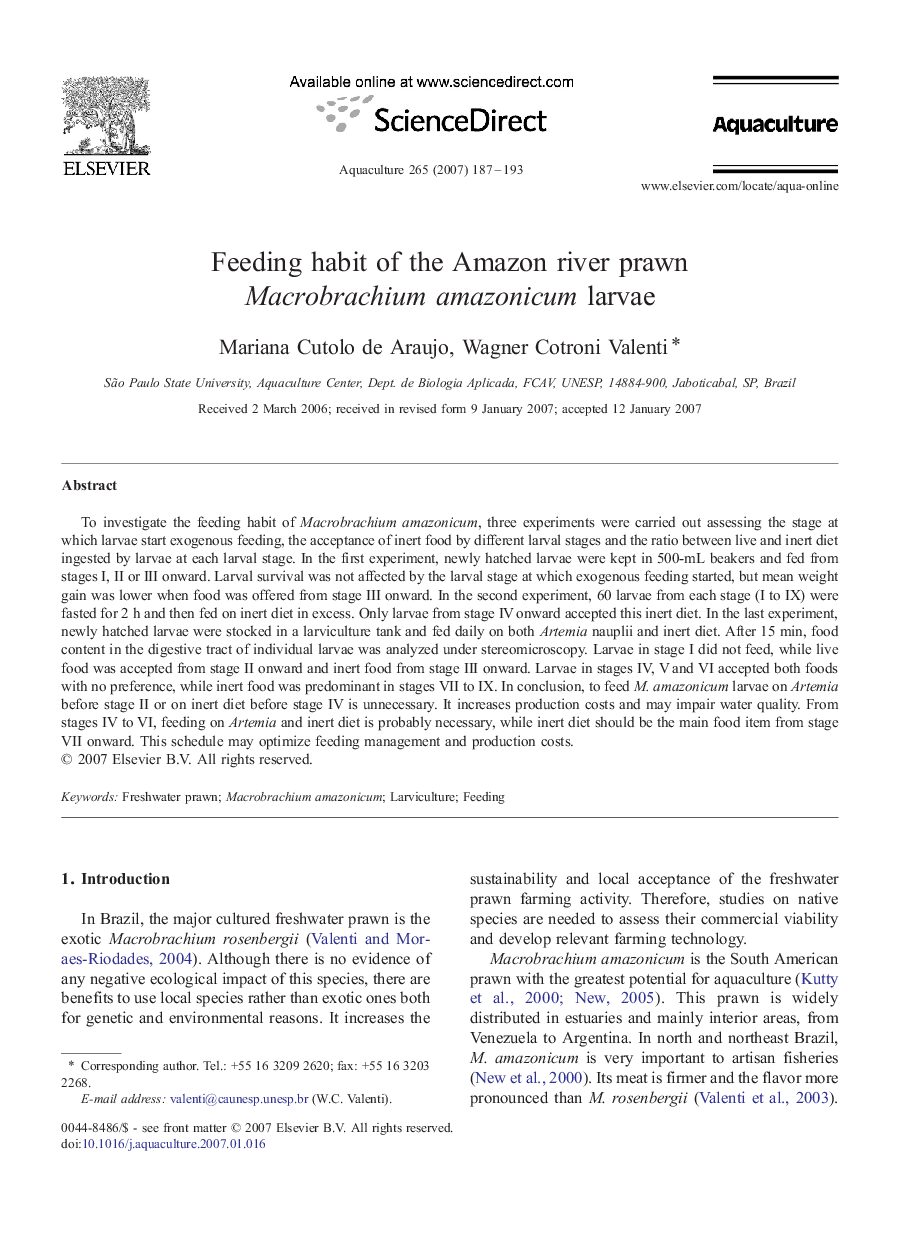| Article ID | Journal | Published Year | Pages | File Type |
|---|---|---|---|---|
| 2425625 | Aquaculture | 2007 | 7 Pages |
To investigate the feeding habit of Macrobrachium amazonicum, three experiments were carried out assessing the stage at which larvae start exogenous feeding, the acceptance of inert food by different larval stages and the ratio between live and inert diet ingested by larvae at each larval stage. In the first experiment, newly hatched larvae were kept in 500-mL beakers and fed from stages I, II or III onward. Larval survival was not affected by the larval stage at which exogenous feeding started, but mean weight gain was lower when food was offered from stage III onward. In the second experiment, 60 larvae from each stage (I to IX) were fasted for 2 h and then fed on inert diet in excess. Only larvae from stage IV onward accepted this inert diet. In the last experiment, newly hatched larvae were stocked in a larviculture tank and fed daily on both Artemia nauplii and inert diet. After 15 min, food content in the digestive tract of individual larvae was analyzed under stereomicroscopy. Larvae in stage I did not feed, while live food was accepted from stage II onward and inert food from stage III onward. Larvae in stages IV, V and VI accepted both foods with no preference, while inert food was predominant in stages VII to IX. In conclusion, to feed M. amazonicum larvae on Artemia before stage II or on inert diet before stage IV is unnecessary. It increases production costs and may impair water quality. From stages IV to VI, feeding on Artemia and inert diet is probably necessary, while inert diet should be the main food item from stage VII onward. This schedule may optimize feeding management and production costs.
